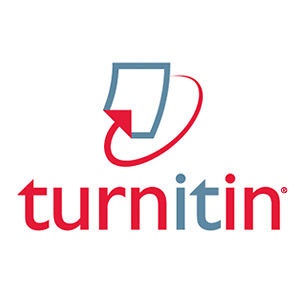Non-Muslim Determinants Using Islamic Financial Institutions
Abstract
Abstrak
Lembaga keuangan syariah memiliki market share yang cukup besar, terdiri dari masyarakat Muslim maupun non Muslim. Berdasarkan data yang ada, jumlah non Muslim di Padangsidimpuan mencapai 8,27% dari total jumlah penduduk. Namun yang telah menjadi nasabah lembaga keuangan syariah belum mencapai 10% dari jumlah yang ada. Tujuan penelitian menganalisis pengaruh lokasi, pelayanan, fasilitas, keuntungan, religiusitas, produk, dan promosi terhadap perilaku nasabah. Penelitian ini merupakan jenis penelitian kuantitatif, dengan menggunakan analisis regresi linier berganda. Sampel penelitian berjumlah 57 orang nasabah non Muslim. Teknik sampling yang digunakan adalah acidental sampling. Hasil penelitian menyimpulkan bahwa secara parsial lokasi, fasilitas, stimulan religi, dan produk tidak memiliki pengaruh yang signifikan terhadap keputusan non Muslim memilih lembaga keuangan syariah di Padangsidimpuan. Sementara itu, secara parsial pelayanan, keuntungan, dan promosi memiliki pengaruh yang signifikan terhadap keputusan non Muslim memilih lembaga keuangan syariah di Padangsidimpuan. Namun secara simultan, semua variabel bebas memiliki pengaruh signifikan terhadap variabel terikat.
Abstract
Islamic financial institutions have a large market share, consisting of Muslim and non-Muslim communities. Based on existing data, the number of non-Muslims in Padangsidimpuan reaches 8.27% of the total population. However, those who have become customers of Islamic financial institutions have not yet reached 10% of the existing amount. The research objective is to analyze the effect of location, service, facilities, benefits, religiosity, product and promotion on customer behavior. This research is a type of quantitative research. The research sample is 57 non-Muslim. The sampling technique used is accidental sampling. The results, that partially location, facilities, religious stimulants, and products did not have a significant effect on the decision of non-Muslims to choose an Islamic financial institution. Meanwhile, partially, services, benefits, and promotions have a significant influence on the decision of non-Muslims to choose Islamic financial institutions. But simultaneously, all independent variables have a significant influence on the dependent variable.
Keywords
Full Text:
PDFReferences
Amin, M., Isa, Z., & Fontaine, R. (2013). Islamic banks: Contrasting the drivers of customer satisfaction on image, trust, and loyalty of Muslim and non‐Muslim customers in Malaysia. International Journal of Bank Marketing, 31(2), 79–97. https://doi.org/10.1108/02652321311298627
Fauzan, M. (2017). FAKTOR YANG MEMPENGARUHI MASYARAKAT NON MUSLIM MENJADI NASABAH DENGAN REGRESI LINIER BERGANDA DI PT. BANK MUAMALAT INDONESIA CABANG PEMATANGSIANTAR. Jurasik (Jurnal Riset Sistem Informasi Dan Teknik Informatika), 1(1), 21–32. https://doi.org/10.30645/jurasik.v1i1.5
Gerrard, P., & Barton Cunningham, J. (1997). Islamic banking: A study in Singapore. International Journal of Bank Marketing, 15(6), 204–216. https://doi.org/10.1108/02652329710184433
Hapsari, F., & Beik, I. (2014). Analisis Faktor-faktor yang Memengaruhi Nasabah Non-Muslim dalam Menggunakan Jasa Bank Syariah di DKI Jakarta. Al-Muzara’ah, 2, 75–94. https://doi.org/10.29244/jam.2.1.75-94
Haron, S., Ahmad, N., & Planisek, S. L. (1994). Bank Patronage Factors of Muslim and Non‐Muslim Customers. International Journal of Bank Marketing, 12(1), 32–40. https://doi.org/10.1108/02652329410049599
Hasibuan, M. S. P. (2009). Dasar-Dasar Perbankan. PT. Bumi Aksara.
Johan, Z. J., Hussain, M. Z., Mohd, R., & Kamaruddin, B. H. (2020). Muslims and non-Muslims intention to hold Shariah-compliant credit cards: A SmartPLS approach. Journal of Islamic Marketing, ahead-of-print(ahead-of-print). https://doi.org/10.1108/JIMA-12-2019-0270
Kuncoro, M. (2013). Metode Riset Untuk Bisnis dan Ekonomi Edisi 4. Erlangga.
Lujja, S., Mohammed, M. O., & Hassan, R. (2018). Islamic banking: An exploratory study of public perception in Uganda. Journal of Islamic Accounting and Business Research, 9(3), 336–352. https://doi.org/10.1108/JIABR-01-2015-0001
Mbawuni, J., & Nimako, S. G. (2017). Determinants of Islamic banking adoption in Ghana. International Journal of Islamic and Middle Eastern Finance and Management, 10(2), 264–288. https://doi.org/10.1108/IMEFM-04-2016-0056
Mohd Thas Thaker, H., Sakaran, K. C., Nanairan, N. M., Mohd Thas Thaker, M. A., & Iqbal Hussain, H. (2020). Drivers of loyalty among non-Muslims towards Islamic banking in Malaysia: Evidence from SmartPLS. International Journal of Islamic and Middle Eastern Finance and Management, 13(2), 281–302. https://doi.org/10.1108/IMEFM-07-2018-0211
Morisson. (2014). Metode Penelitian Survei. Kencana.
Noor, J. (2015). Metodologi Penelitian. Prenada Media Group.
Saiti, B., Ardo, A. A., & Yumusak, I. G. (2019). Why non-Muslims subscribe to Islamic banking? Qualitative Research in Financial Markets, ahead-of-print(ahead-of-print). https://doi.org/10.1108/QRFM-01-2018-0005
Silvana, K. (2009). Bank dan Lembaga Keuangan Lain. Erlangga.
Syafrina, N., & Manik, S. (2018). Faktor-Faktor Yang Mempengaruhi Masyarakat Non Muslim Menabung Di PT. Bank Syariah Mandiri. JEBI (Jurnal Ekonomi dan Bisnis Islam), 3(1), 59–70. https://doi.org/10.15548/jebi.v3i1.145
DOI: https://doi.org/10.24952/masharif.v10i2.6523
Refbacks
- There are currently no refbacks.
Copyright (c) 2022 Al-Masharif: Jurnal Ilmu Ekonomi dan Keislaman

This work is licensed under a Creative Commons Attribution-ShareAlike 4.0 International License.

Plagiarism Checked by:





